How to germinate a chestnut at home?
Amazing chestnut trees grow and delight those around them with their terry pyramidal inflorescences. They are a noble decoration of dusty streets, city parks and squares. There are many types of chestnuts, from powerful giants to compact hybrid forms, which makes it possible even in a tiny garden to find a place for such an interesting plant.
Content:
Growing chestnuts is a snap. They are unpretentious, can grow in well-lit areas, but they also tolerate shading well. It will take a lot of time and patience to grow a full-fledged tree, but the process will be so exciting that you will not notice how the timid sprout turns into a lush blooming chestnut.
Ways to grow a chestnut from a fruit
There are several ways to grow chestnuts from fruit. This can be done using the opportunities provided by nature itself, collecting fruits in a heap in late autumn and covering them with fallen leaves. And in the spring, when the warmth awakens, clean up the pile and get the chestnuts. Many of them will already have strong shoots. Fruits can be planted and grown by caring for them.
You can also germinate chestnuts at home. This process will take a long time, so it is important to be patient. For germination, healthy and undamaged fruits are selected, placed in a plastic bag and sprinkled with moistened sand. The bag should be tied up and placed in a cool place or in the refrigerator.
After 55-60 days, small shoots should already appear. Now is the time to prepare a container for planting plants. A drainage layer is poured onto the bottom of a pot or other container, and a soil mixture is poured on top. The soil absolutely any is suitable, be it from a local park or from a vegetable garden. Sprouted fruits are planted to a sufficient depth, about 2 cm. If the seeds are buried deeper, they will break through very slowly, and if placed near the surface, they can dry out and die.
When the chestnut grows up, it can be planted in open ground in a summer cottage or in the yard. Planting pits are pre-prepared with a drainage layer (crushed stone is better) and a thin layer of slaked lime. The trees should be distributed on the site taking into account future growth, therefore, it is necessary to maintain a distance and plant seedlings at a distance of at least 4-5 meters from each other.
You can use another way to grow chestnuts at home. For this, in late autumn, the required amount of intact chestnut fruits that have undergone natural stratification are collected and stored until the end of the year. In early January, the fruits are planted in clay flower pots and watered periodically (like ordinary houseplants). With the arrival of spring, when constant heat is established, sprouts are planted in open ground, after cutting the tap roots. This will give the plants strength and strengthen the root system.
Tender and vulnerable seedlings need regular watering and feeding... You can feed the chestnuts with organic matter or mixed fertilizers. This is done twice a year: with the arrival of early spring and autumn. Periodically, weeds are removed around the plant and the soil layer is loosened. For better growth, the soil must "breathe" and be enriched with oxygen.During active growth of the plant, young shoots and dried branches are removed from the trunk. This will give the seedling the strength to grow and further strengthen the healthy branches.
With the advent of real frosts and the arrival of winter, young chestnuts are covered with burlap and covered with dry fallen leaves. This will help the young trees to winter safely.
Amazing properties of chestnut
People have long noticed the amazing properties of chestnut and successfully adapt them to different life situations.
In addition to their decorative value, chestnuts have medicinal properties. They have analgesic, anti-inflammatory, venotonic and antithrombotic effects. Official medicine uses extracts from the bark, fruits and leaves of chestnut to obtain drugs that are effective in the treatment of varicose veins, liver diseases, hemorrhoids, to normalize blood circulation.
In folk medicine, the healing properties of chestnut are appreciated. Many people have learned to make alcoholic tinctures to treat ulcers, burns, eczema, coughs and back pain.
In medical cosmetology, chestnut has found application in the form of additives in ointments, shampoos, creams and lotions used to treat skin diseases.
In light industry, chestnut is used for tanning and dyeing wool.
In the livestock sector, chestnut is used as a nutritious livestock feed. It has a beneficial effect on the growth of the animal, as it contains a large amount of proteins and carbohydrates.
In the food industry, chestnut fruits are used as a valuable food additive in confectionery.
Every well-kept garden should have at least one chestnut tree. Perfectly combined with other shrubs and trees, chestnuts look great against the backdrop of lawns or as part of a hedge. And its healing and magical properties make this plant unique and inimitable.



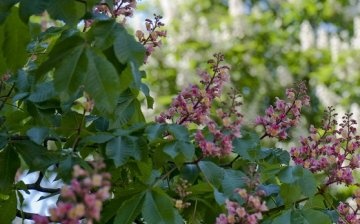

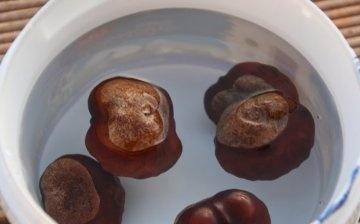
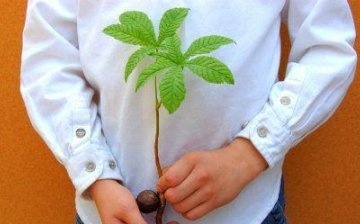




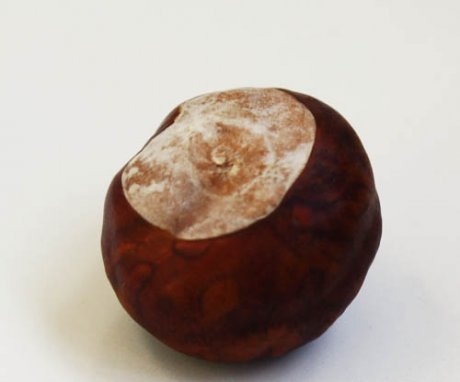
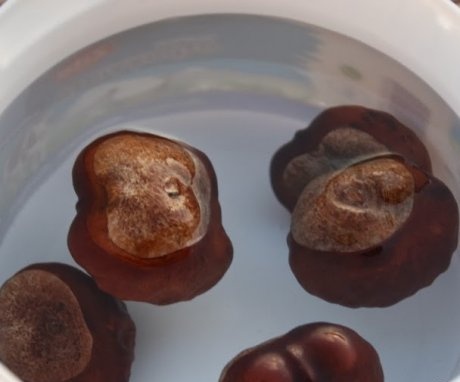

Yes, it is really not so difficult to grow a chestnut, the main thing is that it can get used to your garden and, of course, gain growth. And as far as I know, the tree grows very quickly.
I have never tried to grow a chestnut tree in the garden, probably because I do not know in what climatic conditions it can grow and why it is needed. I only know that it makes sense to plant chestnuts in apiaries to get honey.